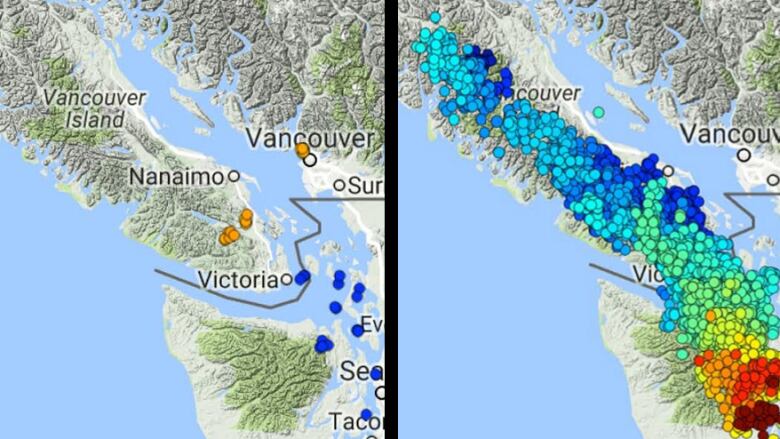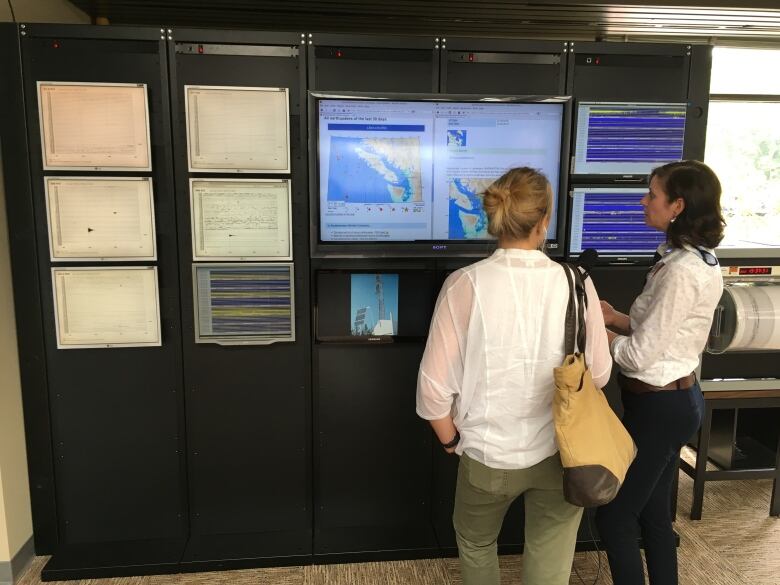'Slow slip' earthquake season raises risk of 'The Big One'
Phenomenon raises risk of 'Big One' roughly every 14 months

B.C. is headed back into another one of its riskierseismic seasons, raising the risk of"The Big One,"earthquake experts say.
Every 14 months, the Cascadian subductionzone which runs from northern Vancouver Island down to northern California experiences what seismologists call a "slow slip."
This year's sliphas already kicked off underneath Washington State and is expected to reach B.C.any day now.
The roughly two-week longphenomenonhappens when seismic stress shifts onto the fault area where the Juan deFucaand North American plates lock together.
That causes thousands of mini-tremors andheightens the likelihood of a major earthquake event in B.C., according to seismologist Alison Bird.
"If that locked zone is close to critical, and you add morestress on to it ... that could trigger, theoretically, the 'megathrust' earthquake,"saidBird, who works for the Geological Survey of Canada.
As for how much more risk that is, she says it's been likened tothe increased risk of driving in rush hour traffic.
"Goingfor a drive in the country on a Sunday, you're not that likely to be in a car accident. But if it's rush hour in Vancouver and there's a game on ... you're more likely to be in an accident. You're not necessarily going to be, but the probabilities are higher."
Tremors undetectable
The tremorscaused by the slip aredifferent from routine earthquakes that occur in the Pacific Northwest, and they aren't felton the surface because they originate so far underground.
"We look at a tremor as sort of a slow earthquake ...it's like you stretch a magnitude-3.0 earthquake over an hour-and-a-half," Bird said.

During the last slow slip, which began in late December 2015, around 8,000 mini-tremors were recorded.
Two earthquakes off Vancouver Islandand near Seattle, Wash.on Wednesday night aren't "at all related" to the slip because they happened away from the locked-zone region, Bird said.
She saidthephenomenon almost serves as a calendar reminder to British Columbians to be prepared.
"We are living in a seismically active area. We will have damaging earthquakes they're guaranteed," Birdsaid. "A lot of people use that cycle to remind them to check on their kit, to review their plan, that sort of thing.
"It's a good'prompt' to make sure you're ready for an earthquake when it happens."
With files from CBC's Johanna Wagstaffe












_(720p).jpg)


 OFFICIAL HD MUSIC VIDEO.jpg)
.jpg)



























































































